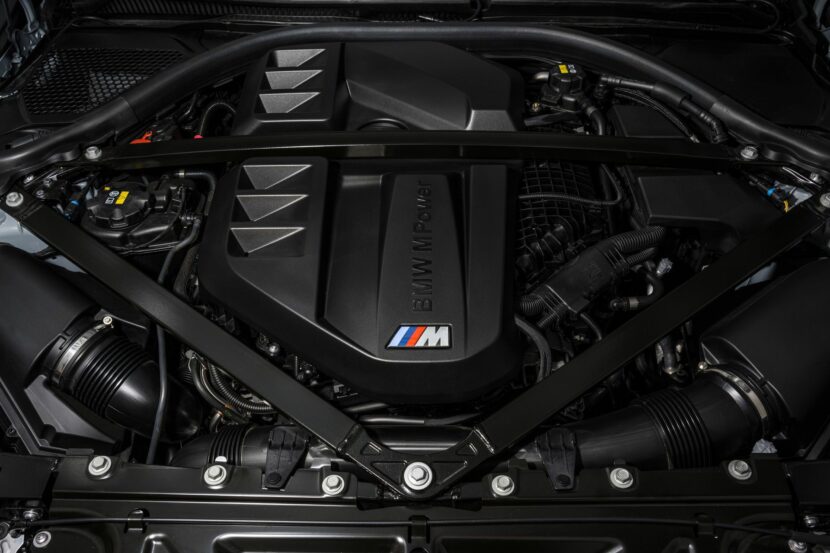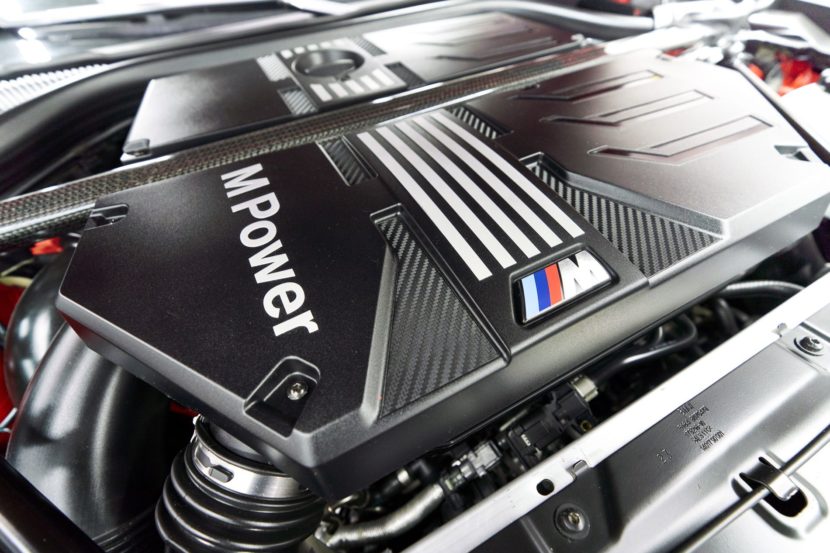Nico DeMattia got the ball rolling with his list of ‘Five Best BMW Engines of All-Time’ and I thought I’d give an alternate view. The history of superior BMW engine designs originates at the very origins of the company – the company that took over from Rapp Motoren Werke in 1917.
Remember that the M in BMW stands for motor, so there are bound to be more than five great motors that have come from this firm. And below are my eight nominations for the ‘Best BMW Engines of All-Time’ in chronological order.
1917 – BMW IIIa aircraft engine (https://www.bmwblog.com/2015/
This is ground zero – the engine that the company was built on. Rapp Motorenwerke had produced an almost useless straight six engine for the Imperial Air Ministry. They intended to close Rapp’s business of manufacturing engines and would takeover and consign the works to repairing existing engines.
Along came Franz Josef Popp and Max Friz with the plans for an aero engine that produced the same horsepower at altitude that it did on the ground. Using normal carburetors, a naturally aspirated aero engine will produce significantly more horsepower at low altitude than at high altitude. That means having to build a stouter engine to handle the extra horsepower at low altitude that’s not available at higher altitudes. Stouter of course means greater weight.
What Max Friz did was to create a an engine that used an aluminum crankcase and aluminum pistons, dry sump lubrication, intake air preheating (to avoid icing of carburetors at altitude), and a register carburetor – state of the art stuff in 1918.
That register carburetor was a neat little trick because it choked fuel and air flow at lower altitudes (restricting air and fuel flow) while increasing air and fuel flow as the aircraft gained altitude. It was a three barreled carburetor with one primary and two secondary throttle bodies. These tricks allowed for a better power to weight ratio for the engine and made BMW’s bones as a respected engineering firm.
1937 – M328 car engine (https://www.bmwblog.com/2012/
Powering the lovely little BMW 328 road cars and special bodied racing cars, the M328 engine was a miscreant jewel. BMW decided to take the existing M326 six cylinder and add an odd duck hemispherical combustion chamber crossflow cylinder head.
What was odd about the engine was the actuation of the exhaust valves. Looking at an M328 the casual observer might think it is a DOHC engine. But the camshaft is not far removed from the centerline of the crankshaft and pushrods extend up the side of the block into the cylinder head. But rather than having both intake and exhaust manifolds on the same side of the head, the M328 had a crossflow head.
To make that happen, given the reuse of the pushrod gallery in the M326 required the exhaust valve pushrods to come up on the intake side of the head, operate a bell crank. The bell crank then operated a horizontal pushrod (that extended across the head) which moved a rocker arm that opened the exhaust valve. Monkey motion in the extreme. But given the RPM limits of the 1930s (fuel characteristics) it wasn’t a significant problem.
One benefit of the unusual pushrod layout, and in order to obtain a crossflow air and exhaust, the carburetors were placed vertically above the intake valves. That allowed a virtually straight shot from the carburetor throat into the combustion chamber – this engine breathed very well.
The M328 engine lived on after World War II via the British manufacturer Bristol. And a Bristol 406, with the Bristol evolution of the BMW M328 engine, is high on my personal list of great Grand Touring cars.
1938 – 801 aircraft engine
If the BMW IIIa was ground zero, the BMW 801 may be the ultimate BMW aero engine. A 14 cylinder radial, the BMW 801 motivated a number of Luftwaffe aircraft during World War II included the much feared Focke-Wulf 190. The 801 evolved over time and included supercharging and direct mechanical fuel injection (fuel injected directly into the cylinders). In addition a water/methanol injection system could also be fitted to allow for a temporary boost in power (critical for takeoff on a heavily loaded aircraft).
But one of the lesser known and very important features of the BMW 801 engine was its Kommandogerät, or command apparatus. It reduced the workload that a pilot would normally be saddled with by reducing the control of the fuel/air mixture (for air density and altitude), ignition timing, supercharger regulation, propeller pitch, and other settings to a single lever. And this was done over 75 years ago.
1941 – M/275/2 motorcycle engine
A variant of the BMW R75 motorcycle is still being made today. It’s not the best of clones, but the Russian Ural motorcycle’s origins can be found in the BMW R75 produced during World War II. It too uses a boxer engine, but I’d take the M275 over the Ural engine any day.
BMW’s foray into making motorcycle engines began after the company was reconstituted from the original engineering staff. BMW was then essentially Knorr Bremse Süd. Yes, it was still BMW – but not in spirit. Knorr Bremse had purchased BMW in 1919 to help sell railroad brake assemblies to the Bavarian state and work on engines was sidelined.
BMW took over the facilities and incorporation papers of another company, Bavarian Aircraft Works, that was formed in 1916. This is why BMW, formed in 1917, has a 1916 birth date. But this new BMW was still finding its way forward. One of the first projects was to build motorcycle engines. The boxer engine format was adapted from a British make, a Douglas motorcycle. BMW continued to refine the boxer format over time (significantly by building their own bikes and mounting the cylinders side to side rather than fore and aft – greatly aiding cooling).
The R75 bike was used extensively in extreme conditions and the M275 was equipped to cope. The air intake and air filter were housed above the gearbox in a protective cover. Ignition timing was automatically adjusted by bob weights and the generator (dynamo) was driven off the nose of the crankshaft. These were hardy engines on stout motorcycles and they could be found wherever the German army was.
1965 – M10 Radial Valve Formula 2 racing engine (https://www.bmwblog.com/2010/
This is the odd duck of the bunch – and possibly the hardest to justify, but it is such and interesting design that I had to include it. This is the ‘Apfelbeck’ engine. A four cylinder with eight intake stacks and eight exhaust pipes – four of each on each side of the engine.
Odd? Absolutely the exhaust valves and intake valves were arranged in an X pattern. Operating the valves were dual overhead cams that used paired and interleaved finger followers. It just looks weird and echoes back to the heretical layout of the M328 engine.
It’s oddity and 300 BHP from 2.0L (well OK, so it was running nitro-methane for fuel to achieve 300 HP) is why it’s made the list.
1982 – M12/13* Formula 1 racing engine (https://www.bmwblog.com/2015/
This is the holy grail of BMW engines – the scourge of Formula 1 after it matured. Starting from well used M10 iron blocks left outdoors for seasoning (including seasoning by employees urinating on them, or so the story goes) these engines at 1.5 L went on to produce more HP than the engine dynos of the time could measure. In qualifying trim (read ‘hand grenade’) and running upwards of 60 lbs of boost, the engine was said to develop about 1,500 HP. Nothing since has done that. And that is 1 hp per cc. Yikes!
Using electronic Kugelfischer injection and the M12 (Formula 2) cylinder head – which was a conventional DOHC head, unlike the Apfelbeck head, the M12/13* was seriously oversquare with an 89.2 mm bore and 60 mm stroke.
In 1983, the M12/13* was mounted in the Brabham BT52 and proceeded to win the World Championship. Nothing has come close to the power output of the BMW M12/13* in Formula 1 since.
1986 – S14 car engine (https://www.bmwblog.com/2009/
The E30 M3 is the car the new generation of automotive scribes pine for. And its heart was the S14 four cylinder. A Frankenstein engine – it mated an M10 short block (the same block that underpinned the gonzoo Formula 1 engine and most of BMW’s four cylinder street offerings) and 2/3rds of an S38 cylinder head (the initial experimental S14s used trimmed S38 heads where the production S14s had a bespoke four cylinder version of the S38 cylinder head).
The engine existed in 2.3 L and 2.5 L versions (and some 2.0 L versions to avoid excess taxation in Italy). The S14 2.3 developed 200 HP, and that provided exceptional performance for 1989 – on a par with the power produced by the V8 engine lurking in the 1989 Mustang GT. Of course, BMW caouldn’t leave well enough alone and bumped power up in the S14 EVO to 220 HP. In 1990 the S14 EVO2 engines displaced 2.5 L and produced 238 HP. These are the engines that formed the basis for the powerplants used in BMW entries in the DTM racing series.
2000 – S54 car engine (https://www.bmwblog.com/2010/
Not much needs to be said about the engine that graced the E46 M3. The ultimate naturally aspirated straight six (I’ll take it over any Aston Martin, Jaguar, Toyota, or Nissan six). More than 100 hp/l and a real aural delight to boot. Individual throttle bodies, Double VANOS, and all sorts of tricks producing 360+ HP from 3.4 L. If you have the chance to drive one, do so!
So there are eight engines that I think are a highlight reel of the diversity of engines produced by BMW over the years. The two volume BMW Dimension publication, ‘The History of Engines – Engines That Made History’, is a handy reference for the work BMW has done over the years.
And if I had to nominate a ninth engine it would be the electric motor used in the i3/i8 – we’ll see more from that in the future.
The comment section is open – fire away!






































































